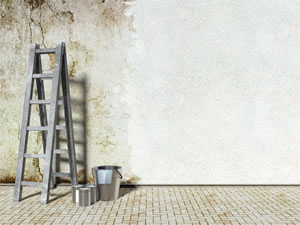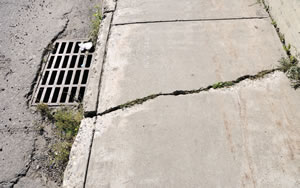Pay Me Now or Pay Me Later: The Cost of Deferred Maintenance

PHOTO © LESZEK GLASNER
“The problem with the term ‘deferred maintenance’
is its perception,” says E. Lander Medlin,
executive vice president of Alexandria, VA-based
APPA, Leadership in Education Facilities, which supports
educational excellence with quality leadership and professional
management through education, research and recognition. “The
term sounds like the maintenance team didn’t do its job in the first
place, which we know isn’t true. It’s upsetting because it sheds a
poor light on the quality and delivery of facility systems.”
The truth is that facility managers and campus management are doing all they can to maintain facilities. They know what needs to be
done, how often and the cost to do it. What they don’t have is funding.
“Higher education falls behind Medicare, K–12 education and,
in many states, prisons in terms of funding,” says Medlin. “So we
could be fourth on the list. A look at the 30-year cycle shows a drop
in support from 50 to 60 percent of states’ budgets to 15 to 20 percent
at best. In addition, funding for higher education is not a mandatory
fund requirement; it’s part of the discretionary fund budget.”
The funding losses and subsequent stretching of funds across
square footage to be maintained affects two areas. The first is
actual cost of ownership. “If you’re not doing preventive maintenance
because you don’t have the money or staff, then facilities’
life cycles will be reduced,” says Medlin. “For example, if there’s
a roof failure, I need to repair it. If I can’t afford to repair it, it will
negatively affect other systems inside the building that become wet
and damaged from rain. In other words, if you don’t pay me now,
you’ll pay me more later.” The second is the conscious decision to
defer maintenance. “This is about looking at risk to reliability,” she
says. “For example, do I want to change out expensive systems now if I believe I can tolerate the risk associated with a lesser reliability
quotient in waiting two to three years when I know the facility will
be fully renovated?”
Here’s a look at how managers at two campuses are rallying to
reduce deferred maintenance and its negative connotation.
University of California, Riverside
“UC Riverside is an aging campus,” says Jeff Kaplan, associate vice
chancellor, Capital Assets Strategies. “Most of it was built
50 to 60 years ago, and that is the prime sweet spot where deferred
maintenance issues become issues.” To that end, administrators at this
campus of 22,000 students have identified approximately 247 deferred
maintenance projects. “Those projects have been deferred mostly because
of funding,” he says. “The projects are of such a magnitude/size/impact that they had to be put off. For us, it totals around $268 million.”
The plan to reduce the amount of deferred projects is twofold.
First, Kaplan looks for strategic opportunities to put projects into
capital renewal programs, as Medlin previously mentioned. “For
example,” he says, “if I have an opportunity to renovate a whole
building, we’ll take the deferred maintenance roof replacement off
that list and put it in the building renovation project. It gives us the
ability to treat an asset holistically instead of by its components.
That doesn’t happen a lot.”
Second, Kaplan is appropriating local campus funds in addition
to state funds to buy down the deferred maintenance backlog.
“But even the rate of buy down is challenging,” he admits. “We’re
able to address the most immediate urgent needs. As we take
things off the list, other things are added. We’re doing better than
treading water, but it’s not a cure-all — it’s still challenging.”

PHOTO © GARY WHITTON
Medlin notes that the trend to use campus funds is growing.
“Facility managers have done everything they can to maintain
quality,” she explains. “Now administrators are replenishing
funding losses through tuition. This is a problem because we all
believe access to education is important. However, there’s a point
of no return where access will be limited to those who can afford
it. That’s terrible because it will turn education into a private
benefit rather than a public benefit. We’re at a crossroads here. I
don’t know that institutions can increase tuition more. There’s
pressure by all parties — students, parents, administrators,
board members — to find a solution.”
Ithaca College
Deferred maintenance at New York-based Ithaca College, which
has nearly 7,000 full- and part-time undergraduate and graduate
students, has two causes. The first is new construction. “A
preponderance of money is going to new building care,” says Dr.
Tim Carey, associate vice president/chief facilities officer, “and
the backlog builds, and buildings suffer.” The second is an aging
infrastructure. “Most of our buildings were built in the 1960s and
’70s,” he says. “That vintage of construction was not of the highest
quality. That’s a national norm, not just true on our campus. The
buildings are reaching ages where things are beginning to fail. So
it’s hitting all of our radar screens simultaneously.”
Carey is working to reduce deferred maintenance via a unique
approach: combining a condition audit of the physical campus into
the master plan. “I folded these two fairly monumental endeavors
into one process,” he notes. “Our master plan, which will last 10 to
20 years, is informed and guided in a significant way by the condition
of our current campus.”
In addition, Carey created a five-year
strategic financial plan to address the
most significant and emergent deferred
maintenance items. It’s a living/breathing
document, changing as needs change. “We
have just begun year two of that plan,” he
explains, “and the impact is already being
recognized. For example, in the past, when
there was significant rain in the forecast, we
knew where to go to place buckets to collect
rainwater from roof leaks. This has been
addressed in the strategic plan. We’re in a
better place today than we were two years
ago, and I think it’s only going to get better.”
Finally, for two years now, there has
been no new construction. Instead, Carey
is allocating capital monies to deferred
maintenance. As a result, the campus’
condition is greatly improving, and it’s becoming
more energy efficient. For example,
boilers and chillers are being replaced with
more energy-efficient systems, roofs are
being replaced with ones that have better
insulation than the old ones and singlepane
windows are being replaced with
more energy-compliant windows.
Kaplan sums the deferred maintenance
challenge well. “Maintenance and replacement
should be budgeted,” he says, “so
you have the money in a capital reserve
to replace systems proactively and not
reactively. Yet, how can you justify setting
money aside for the future when you don’t
have money for the past? You have to have
your deferred maintenance at zero, and
who has that?”
NUMBERS INDICATE FACILITIES MANAGEMENT IS APPROACHING A REACTIVE POSITION
Private campuses’ deferred maintenance backlog has grown
by 18 percent since 2007, while the backlog at public campuses has
increased by 22 percent, according to State of Facilities in Higher
Education 2015 Bench Marks, Best Practices & Trends, a publication
of Sightlines, a higher education consulting firm. “More importantly,”
the report states, “we have been warning that public campuses are
approaching an average backlog of $100/GSF backlog, a level many
experts believe is when facilities management moves from proactive
to more reactive.” For more information, read the full report at www.sightlines.com.
This article originally appeared in the issue of .